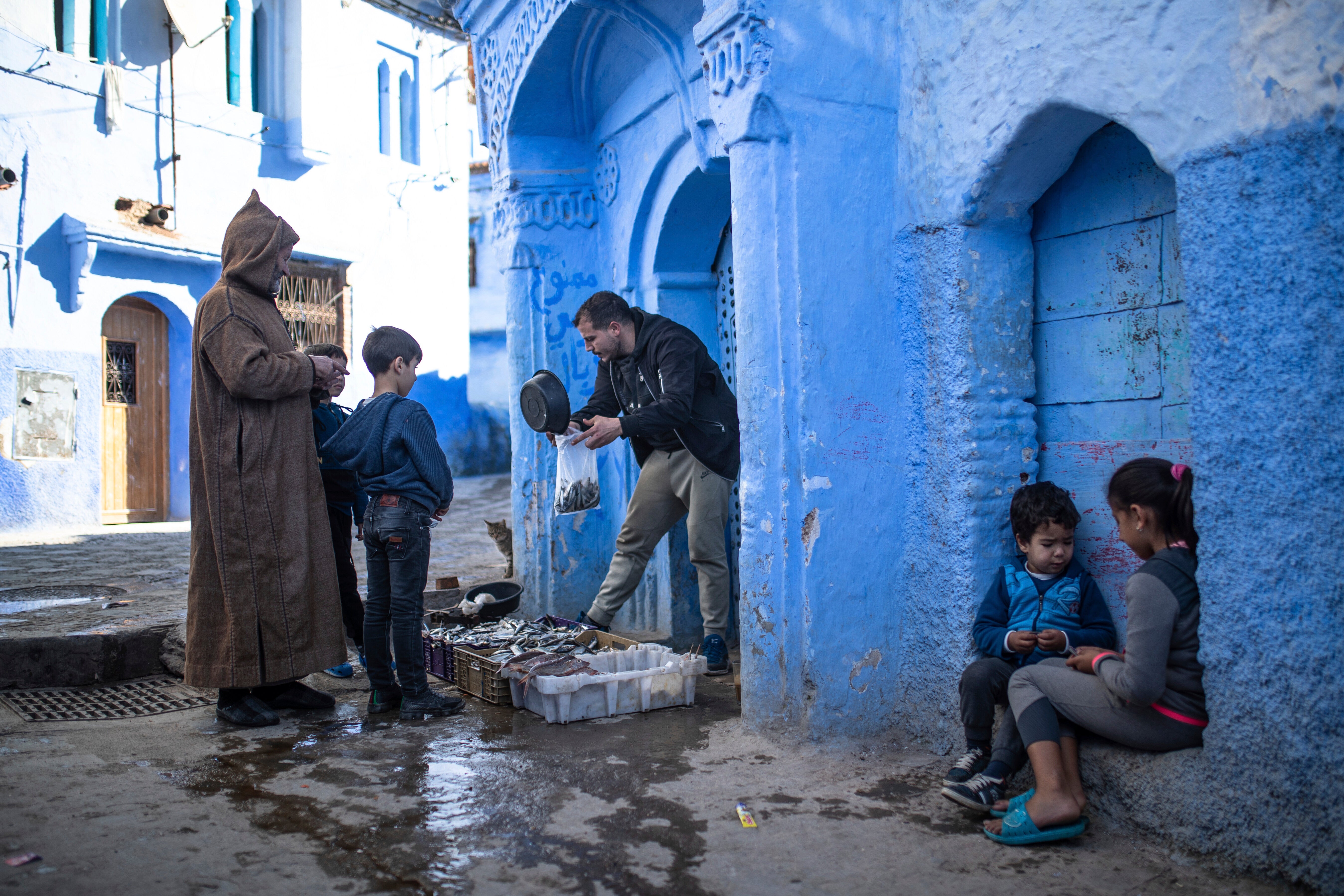AP PHOTOS: Pandemic empties blue-hued Moroccan tourist town
When COVID-19 hit Morocco, the mountainous town of Chefchaouen was one of the few that registered no cases

Your support helps us to tell the story
From reproductive rights to climate change to Big Tech, The Independent is on the ground when the story is developing. Whether it's investigating the financials of Elon Musk's pro-Trump PAC or producing our latest documentary, 'The A Word', which shines a light on the American women fighting for reproductive rights, we know how important it is to parse out the facts from the messaging.
At such a critical moment in US history, we need reporters on the ground. Your donation allows us to keep sending journalists to speak to both sides of the story.
The Independent is trusted by Americans across the entire political spectrum. And unlike many other quality news outlets, we choose not to lock Americans out of our reporting and analysis with paywalls. We believe quality journalism should be available to everyone, paid for by those who can afford it.
Your support makes all the difference.When COVID-19 hit Morocco, the mountainous town of Chefchaouen was one of the few that registered no cases The picturesque town, its facades painted in distinctive hues of blue, shut its small population off from the world, and kept the virus out for months.
Now, as the North African nation cautiously reopens and tries to resuscitate its struggling economy, Chefchaouen stands subdued, deserted by the tourists that have long been its lifeblood.
In the narrow streets, idle youth light cannabis joints and chat, pausing to offer to sell some to passers-by. Fishermen bring their catch of the day from nearby rivers, selling sardines on street corners, as cats linger, waiting to be rewarded with the leftovers. Kids carry trays of pastries made by their families to sell.
During the Christmas and New Year's holidays, the majority of the city’s visitors were local tourists instead of the European and Chinese visitors who usually throng the narrow streets. Shop owners who typically sell rugs, woolen coats and souvenirs struggled to find clients.
As a night curfew came into effect, established across the country to prevent large gatherings during the holiday season, restaurants in the usually bustling main plaza by the historic Kasbah had to turn away clientele to close up early.
In the Middle Ages, the town was populated by Moriscos, or Moors, fleeing the Spanish Inquisition. Today, it's known as the “Blue Pearl of Morocco,” and is one of the top destinations in the kingdom, often overcrowded, with hotels booked to capacity.
Its laid-back vibe, brilliant blue alleyways, sweeping mountainous landscape and hiking trails have long attracted tourists, especially from Spain and China, whose citizens enjoy visa-free travel to Morocco.
Despite the specter of the pandemic which has killed more than 7,000 people in Morocco and depressed the economy, the shutdown of Chefchaouen has brought a bit of unexpected respite.
The absence of tourists posing for photos beside its iconic carved doors and distinctive stairs seemed to liberate one of the most photographed spots in Morocco, giving its residents a chance to slow down and absorb the quiet beauty of their own town.
___
Follow AP’s pandemic coverage at https://apnews.com/hub/coronavirus-pandemic,https://apnews.com/hub/coronavirus-vaccine and https://apnews.com/UnderstandingtheOutbreak